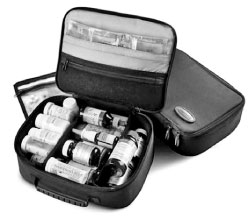|

Squint - eyed !
Correction is easy if diagnosed early:
by Nilma Dole
 Squints are cosmetically not very attractive even though people have
superstitious beliefs that such children bring luck. “Many people often
think that the squint eye condition is something that will be corrected
over time but this is not true,” said President of the Sri Lanka College
of Oncologists, Dr. Dharma Irugalbandara. Squint eye doesn’t disappear
over time and needs to be corrected promptly. “The problem is that the
vision is diverged because one eye looks at one angle and the other
looks elsewhere and this can affect the vision of the child when they
grow up” she said. Squint can be easily corrected so parents of children
with the squint should go to an ophthalmologist quickly before the child
grows with the condition thinking that it will correct itself. Squints are cosmetically not very attractive even though people have
superstitious beliefs that such children bring luck. “Many people often
think that the squint eye condition is something that will be corrected
over time but this is not true,” said President of the Sri Lanka College
of Oncologists, Dr. Dharma Irugalbandara. Squint eye doesn’t disappear
over time and needs to be corrected promptly. “The problem is that the
vision is diverged because one eye looks at one angle and the other
looks elsewhere and this can affect the vision of the child when they
grow up” she said. Squint can be easily corrected so parents of children
with the squint should go to an ophthalmologist quickly before the child
grows with the condition thinking that it will correct itself.
Aligned
The medical term for the squint eye is known as strabismus where the
eyes are not properly aligned with each other. “This causes one of the
eyes to turn inwards (converge), outwards (diverge) or sometimes
upwards, while the other eye looks forward and this can totally affect
depth perception and judgment” said Dr. Irugalbandara. Further she
added, “It can be noticed by parents when their baby is a few weeks old
and it affects 5-8% of children (1-2 in every 30).” The most common
symptom of a squint is one of the eyes not looking straight ahead or
your child may also look at you with one eye closed, or with their head
turned to one side, or have photo phobia which is difficulty in facing
light. “These may be clues that they are experiencing double vision, and
could be a sign that they have a squint” said the doctor.
There are different types of squints. A baby can have a congenital
squint (born with the condition), particularly if it runs in the family
or it can come about due to muscle or nerve problems in the eye,
possibly as a result of a childhood disease like Toxoplasmosis.
If a child is long sighted, their eyes will attempt to focus so much
that squint occurs when he/she is not wearing spectacles. “Treatment
should be done at a young age like getting your child to wear glasses if
they are long sighted,” she said.
 A patch may need to be worn over the good eye, to encourage the eye
with the squint to work harder,brain to be stimulated and become trained
to work properly and in some cases, special eye drops or eye exercises
can train the eye to function well. If none of these treatments help,
then surgery may be required. A patch may need to be worn over the good eye, to encourage the eye
with the squint to work harder,brain to be stimulated and become trained
to work properly and in some cases, special eye drops or eye exercises
can train the eye to function well. If none of these treatments help,
then surgery may be required.
Surgery
Surgery for a squint involves moving the muscles attached to the
outside of the eye to a new position.
It may sometimes be necessary to operate on both eyes in order to
‘balance’ them effectively, even if the squint is only in one eye.
“Don’t worry about the operation because your child can see well, since
surgery does not touch the focusing part of the eye” said Dr.
Irugalbandara.
A complication that can develop if a squint is untreated is amblyopia
in which the vision in the affected eye gradually gets worse because the
brain starts to ignore the weaker message being sent from that eye.
“Once this has occurred, it is not possible to correct the damage, which
is why it is so important that any squint must be treated early”, Dr.
Irugalbandara concluded.
Variety in meals could give you longer life
Food containing anti-oxidants, whole grains and vital fatty acids cut
the risk of major illnesses like heart disease, Alzheimer’s and
diabetes, a study shows.
Scientists found that the diet could reduce cholesterol - a major
cause of heart disease - by a third and bring blood pressure down by
nearly a tenth, reports express.co.uk.
But rather than just a narrow range of foods being responsible for
boosting health, the study showed that the answer was a widely varied
diet that might include oily fish, porridge oats and blueberries. It has
long been known that keeping active and a healthy diet can hold back the
onset of a range of diseases like heart problems and cancer.
Previous studies have put this down to eating lots of
antioxidant-rich fruits, vegetables and nuts, others to a diet rich in
fish containing essential fatty acids, like fresh mackerel, and some to
wholegrain cereals.
Nutritionist Angela Dowden said: “The key is definitely to introduce
these kinds of foods into the diet. It is a very healthy diet and
completely proves the point that it is about healthy eating as a whole,
not just doing one thing.”
“It is a lifestyle change instead of tweaks here and there. It could
be that it is just one of the foods that is producing these effects but
it is much more likely that it is an additive affect of them all
contributing,” she added.
- Hindustan Times
Vision care
by Harriet Cooper
Look in a mirror. Imagine seeing a blurred reflection or a dark hole
where your face should be. That’s what having cataracts or age-related
macular degeneration (AMD) looks like. Now imagine you can slow down or
stop vision loss.
 You can. From healthy foods to everyday supplements, what you eat
affects your eyes. You can. From healthy foods to everyday supplements, what you eat
affects your eyes.
Eye care solutions: Red, tired, or dry eyes?
Don’t reach for commercial eye drops that promise to get the red out.
They work by shrinking the blood vessels in the eye, but overuse can
make dry eyes worse, while their preservatives act as an irritant.
Check your local health food store for
herbal remedies and eyewashes.
Look for products containing camomile or
eyebright (Euphrasia).
Consider adding more omega-3-rich foods to
your diet to help relieve dry eye symptoms.
Note: prolonged red, irritated, or painful
eyes may indicate a medical condition. Consult your health care
practitioner.
AMD can steal your vision
The macula, a small spot on the retina, gives your sight its acuity,
colour perception, and functionality in daylight.
Researchers describe AMD as a severe speeding up of the aging of the
retina and surrounding tissues. AMD starts with a small loss of central
vision; in advanced cases it can lead to blindness.
AMD is the leading cause of severe vision loss among people 55 and
older. According to the Canadian National Institute for the Blind, one
million Canadians have some form of AMD-a number expected to double
within 25 years as the population ages.
Supplements, healthy eating slow AMD
The Age Related Eye Disease Study (AREDS), a major long-term clinical
trial sponsored by the US National Eye Institute, is a major source of
information on AMD. AREDS researchers developed a formulation containing
the antioxidant vitamins C, E, and A plus zinc and copper.
This formulation reduced the risk of progression to advanced AMD by
25 percent, and the risk of moderate vision loss by 19 percent in
intermediate or later stages.Omega-3 fatty acids also play a significant
role. Two to three weekly servings of fatty fish, such as tuna, salmon,
or mackerel, reduced the risk of both early and late AMD, up to 38
percent in one study.
Tufts University researchers discovered antioxidants interfere with
the absorption of omega-3 in early stages of AMD, but not in later
stages. That may explain why omega-3 is valuable at all stages of AMD,
while the AREDS formulation works in later stages.
AREDS2 is now testing a new formulation with added lutein and
zeaxanthin, which absorb eye-damaging blue light waves, and omega-3s.
Green leafy vegetables such as spinach, collard greens, and kale are
good sources of lutein; fruits such as oranges, corn, nectarines and
persimmons contain zeaxanthin.
Natural herbal products such as bilberry and Ginkgo biloba have
traditionally been used to help in the prevention of AMD’s progression.
These herbals have undergone some clinical trials, though none have been
definitive yet. As with any treatment, check with your health care
practitioner.
More dietary effects on AMD Tufts researchers also recommend a low-glycemic
diet. They theorize high-glycemic foods, such as white bread and sugary
drinks, trigger a rapid rise of blood glucose that damages retinal
cells.
But don’t reach for red meat instead. Researchers at the Centre for
Eye Research Australia (CERA) found heavy consumption of fresh or
processed red meat (10 or more servings per week) increased the risk of
developing AMD by almost 50 percent. Eating chicken (3.5 servings per
week) reduced the risk by 50 percent.
The data on fats is less clear. A study of the Women’s Health
Initiative looked at the effects of amount and types of dietary fat and
AMD. While monounsaturated fats seemed to protect against AMD,
polyunsaturated fats increased the risk of developing AMD for women
under 75, but reduced the risk for older women.
Cataracts cloud your vision
Cataracts are a common eye condition caused by age, disease, or
injury. As the eye’s lens becomes increasingly rigid, less transparent,
and thicker, the lens clouds and can turn yellowish brown. It no longer
focuses light directly on the retina, resulting in dim blurred images,
light sensitivity, fading or browning of colours, and poor night vision.
Age-related cataracts may begin during our 40s or 50s, but usually
don’t affect vision until the 60s. By age 80, more than 50 percent of
North Americans either have cataracts or have had corrective surgery.
Managing cataract risk factors
Along with aging, risk factors include:
* medical conditions (genetics, diabetes, high blood pressure, eye
injuries)
* medical treatments (X-rays, cancer radiation, eye surgery,
long-term steroid use)
* lifestyle (excessive alcohol, obesity, smoking, overexposure to
sunlight).
While managing risk factors is important, don’t forget proper
nutrition and supplements. The Mayo Clinic endorses a healthy diet with
a variety of colourful fruits and vegetables, including green leafy ones
to ensure plentiful sources of vitamins and nutrients that could prevent
damage to the eye’s lens.
Although research varies, a Tufts University study indicated higher
levels of vitamins C and E, riboflavin, folate, a-carotene, and lutein/zeaxanthin
may lower the risk of cataracts.
Look after your eyes: eat a diet rich in eye-healthy foods and look
for eye-supporting supplements at your natural health store to ensure
quality, purity and potency.
Courtesy: Alive
Dry eyes
by Dr. Mahipal Sachdev
Headaches, loss of focus, burning eyes, double or blurred vision or
neck and shoulder pain is not uncommon among people who use computers
for more than two hours at a stretch. The condition is called Computer
Vision Syndrome (CVS). Its symptoms are eye strain and tiredness,
temporary weak vision, dry irritated eyes, light sensitivity and other
vision and muscular problems that stem from using a computer.
 People who are already nearsighted, farsighted, or have astigmatism
are more likely to develop computer vision syndrome. Multi-focal lenses
make it even more difficult because the screen is higher and further
away from the zones meant for distance and near vision. Glare from
surrounding lamps and lights can also add to eyestrain. People who are already nearsighted, farsighted, or have astigmatism
are more likely to develop computer vision syndrome. Multi-focal lenses
make it even more difficult because the screen is higher and further
away from the zones meant for distance and near vision. Glare from
surrounding lamps and lights can also add to eyestrain.
Solutions:
1. Use proper lighting: The ambient lighting should be about half of
that used in most offices. If possible, position your monitor so that
windows are at its side, instead of in front or at the back.
2. Adjust the brightness of your computer screen: Closely match the
brightness of the environment with that of your computer screen by using
the buttons on the monitor.
Also adjust the monitor to make sure the contrast between the screen
background and the on-screen characters is high. And make sure that the
text size and colour are optimised for comfort.
3. Blink often: Blinking moisturises your eyes and helps avoid
dryness and irritation. According to studies, people blink about five
times less than usual when working at a computer. Every 30 minutes,
blink 10 times by closing your eyes very slowly as if falling asleep.
4. Exercise and stretch your eyes: Look away from your computer
screen every 30 minutes and focus for 5-10 seconds on a distant object
outside.
5. Take frequent breaks: Follow 20-20-20 rule. Take a 20-second break
and look 20 feet away every 20 minutes.
6. Reposition your workstation: If you need to look back and forth
between a printed page and your computer screen, this can cause
eye-strain. Place written pages on a copy stand adjacent to the monitor.
Adjust your workstation and chair to the correct height. Purchase
ergonomic furniture to insure proper screen locations and posture.
(The writer is the Chairman and Medical Director, Centre for Sight
Group of Eye Hospitals, New Delhi)
Tips for travelling with medications
by Laurie LaRusso
Your bags are packed. You’re checking and double-checking that you’ve
got everything. Do you have enough of your blood pressure medication? or
allergy pills? or insulin? Whatever medications you take, your trip
won’t be much fun if you run out, or your medications are lost, or you
get sick because you didn’t take them at the right times. Here’s how to
make sure you have your medications when you need them while you’re
travelling:
Bring More Than Enough Medication.
 Bring extra supply of your medications with you in case you lose or
spill some. This will also ensure that you have enough medication with
you if your trip is lengthened for some reason. Some medications in your
country are not available in other countries. It may be difficult to get
a prescription filled away from home. Bring extra supply of your medications with you in case you lose or
spill some. This will also ensure that you have enough medication with
you if your trip is lengthened for some reason. Some medications in your
country are not available in other countries. It may be difficult to get
a prescription filled away from home.
Bring the prescription
If you do need to get more medication while you’re travelling, you’ll
have a much easier time if you have the prescription.
Bring a note from your doctor.
If you take prescription medications, carry a letter from your doctor
with you explaining your condition, what medication you take, and the
dosage. Make sure you have this information for all the drugs you take.
With increased airport security measures, you may find that security
officers are more concerned about what you’ve got in your bag. This can
be of particular concern if you must carry medical equipment, such as
syringes to inject your medication.
Plan for Time Zone changes.
Talk to your doctor about how you’ll adjust your medication schedule
to account for changing time zones. When travelling overseas, you can
lose or gain as much as a day, so you’ll need to carefully time your
medication doses so you don’t miss any.
Pack medications in a carry-on bag.
Keep your medications with you while you’re travelling. You may need
to take your medications while you’re in transit-on the airplane, in the
airport, on the bus or train. Even if you’re travelling by car, keep
medications in the car with you. The trunk of the car and the baggage
areas of planes and buses are not temperature controlled, and some
medications should not be exposed to very hot and very cold
temperatures. Plus, if your luggage gets lost, you could be without it
for days.
Bring your own water (and food if necessary).
Do not drink tap water if you are travelling in certain regions.
Instead bring your own or buy bottled water. And if you need to take
your medication with food, bring your own snacks. Don’t rely on stores
or restaurants to be available or airlines to serve food.
Courtesy: HealthyMe
|

